Jain Temple and Rock Sculptures of Gwalior Fort
The treeless Fort-rock of Gwalior rises abruptly from the plain on all sides. It can boast of a number of exquisite Jaina sculptures. Some are rock-cut and facing narrow ledges in the vertical walls of the solid rock. Others are free standing (not rock-cut) and have survived on the plateau; they are now mostly kept in the newly built Archaeological Museum. Our chronological frame for the Jaina sculptures, which must have been executed by more than one generation of artists, is 700-800.
In spite of the iconoclasm of the Islamic invaders, the early Jaina sculptures of Gwalior have survived in fairly good condition so that their former splendour is not lost. The reliefs reproduced by us are cut into the cliff-wall below the Ek-khamba Tal (tal = tank) on the western side of the Fort-rock {south-western group), but there are early Jaina sculptures at other points as well. Naturally, Gwalior is above all a Hindu site. Two Hindu temples of the early period are still extant, the famous Teli-ka-Mandir (750-800) on the plateau and the small rock-hewn Caturbhuja Temple (876) a short way up on the left of the approach-road leading to the plateau.
A medium-sized Jaina temple, dated 1108, has survived in dilapidated condition. However, there was a revival of Jaina art at a much later date, viz. in the 15th century under the predecessors of Man Singh Tomar (1486-1516). Several groups of Jina figures have been excavated in the steep cliff immediately below the walls of the fortress. “The rock sculptures of Gwalior are unsurpassed in North India for their large number and colossal size but from the artistic view point they are degenerate and stereotyped.” Well-known is the Urvahi group (“The western side of the hill is broken by the deep gash of the Urvahi ravine”). The largest Jina image of this group is a standing colossus measuring 57 feet (17.4 m) in height. However, the south-eastern group, half a mile in length and situated under the Gangola Tal is even more important than the Urvahi group.

Fig. 1: Jina composition with subsidiary Jina figures, Gwalior Fort (Photo courtesy Günter Heil).
In 1527, the Urvahi Jinas were mutilated by the Mughal emperor Babar, a fact which he records in his memoirs. Babar wrested Gwalior gradually from the governor of the former Delhi Sultan who had taken possession of the Fort in the days of Man Singh's son. The rigorous iconoclasm of the Muslim invaders is well-known, but this is not to say that there was permanent hostility between Muhammedans on the one hand and Hindus and Jainas on the other. Often the contacts between the communities were so close that the orthodox members on both sides feared that their respective religions might lose their influence on the believers. Still, to this day the damage once caused by the invading armies can be seen in the whole of Northern India. Hindu art flourished at Gwalior in all periods. In 1093, Hindu architects completed the two Sas Bahu temples, both lavished with decoration, on the plateau of the Fort-rock of Gwalior. Much later, Gwalior came under the rule of the Tomara dynasty with Man Singh Tomar as the most prominent figure. This king built the magnificent Man Mandir and the Gujari Mahal, two palaces which are amongst the earliest specimens of Rajput architecture.
Jaina images at Gwalior
The extant Jaina images of Gwalior display a remarkable thematic variety. We find Jina images and panels, two Jina compositions, one representation of Bahubali, the meditating saint, who is well-known on account of the huge statue at Shravana Belgola, and two compositions which show the resting queen (“mother of the Jina”) and Kubera-and-Ambika respectively. The Gwalior images are mostly rock-cut (cut into the cliff), and we will here concentrate on this part of the material.
Our Fig. 1 and 2 show one of two big Jina compositions which take the form of niches in the steep rock. A tall Jina in the centre is flanked at waist-height by four additional Jinas, two on either side. The central Jina motif is enriched by the addition of further Jina figures (1+4) and by the representation of numerous 'miracle motifs'. Most of these miracle motifs are contained in a list of eight as known from Jaina literature:
- An Ashoka tree
- a shower of flowers
- heavenly music
- two fly-whisks
- a throne
- a halo
- heavenly drum(s)
- parasol(s)
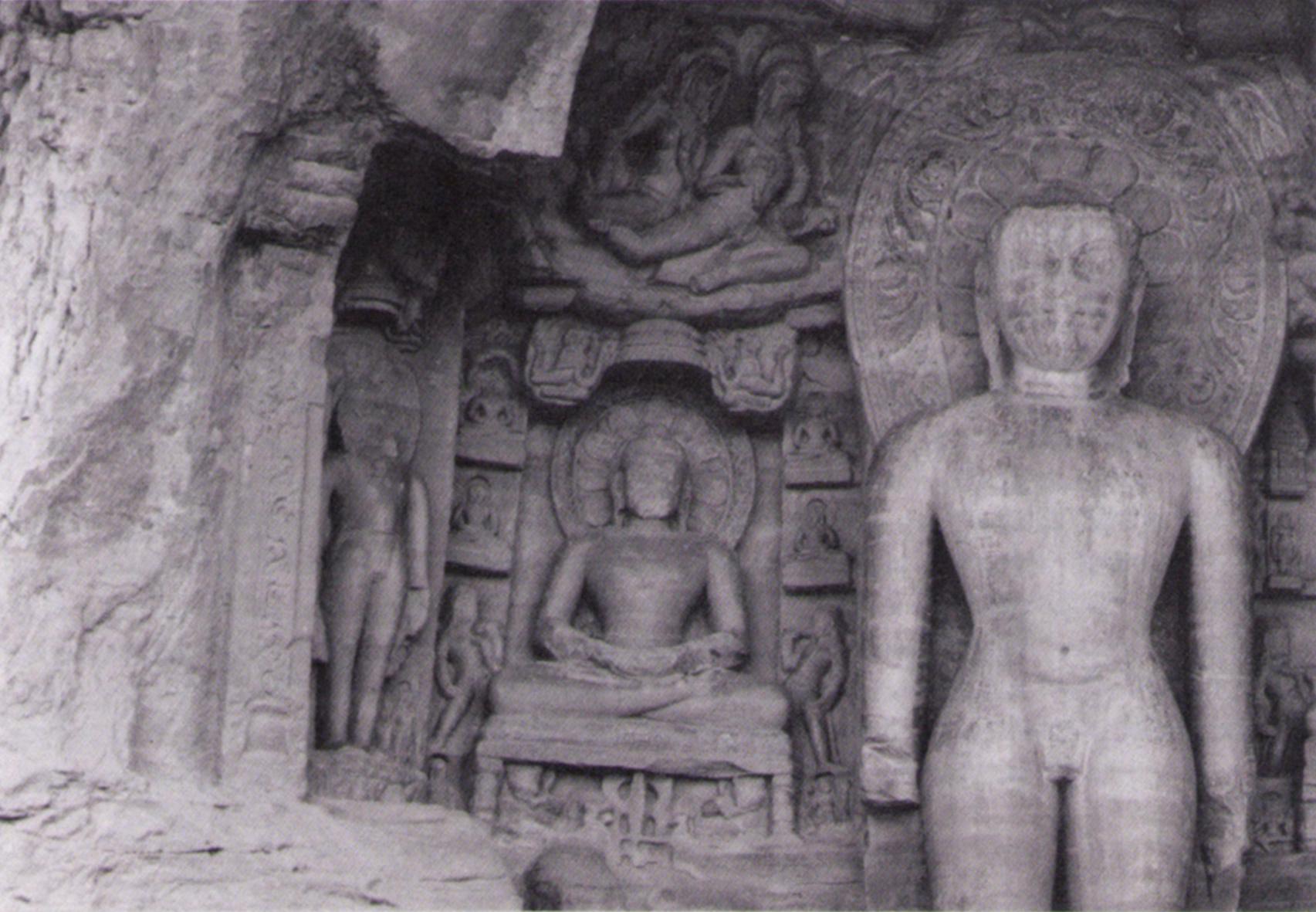
Fig. 2: Detail of the niche composition of Fig. 1 (Courtesy Günter Heil).
The expression 'miracle motif refers to emblems of royalty which surround the Jina in a singular manner. The motifs mostly belong to the common stock of ancient Indian iconography - Hindu, Buddhist, Jaina - which developed during and after the Kushana period. They surround the figures of gods and saints and are arranged according to the laws of symmetry. When the motifs had already come to stay in art, they found their way also into the literary tradition, where they are described in great detail. It is important to know that the number of miracle motifs used in the representation of the Jinas differs from period to period and from region to region.
We select for our analysis the central Jina and the seated Jinas to his left and to his right. The highly stylised Ashoka tree is visible above the central Jina (foliage on both sides) and also above the seated Jina to the right. The shower of flowers is probably represented by the divine figures hovering above the Jina and flanking the triple parasol roof. We notice in the case of the central Jina two divine couples, and in the case of the two lateral seated Jinas two single figures (male figures). The divine couples occupy a prominent place in the composition. The garlands, mainly in the hands of the male figures, link the motif with the 'shower of flowers' as listed in literature. As usual, the heavenly music is not represented, whereas the fly-whisks, the throne, and the halo are all included into the iconographic programme. However, we do not see detached fly-whisks hovering in the air, but fly-whisks in the hands of human figures. The throne (shown along with the two seated Jinas) takes the form of a lion-throne, i.e. a throne resting on two supports in the form of lions. Between the two lions, a dharmachakra (“wheel of the law”) is represented. It is seen from the edge, and it is adorned with ribbons issuing on both sides from the hub. In Central and Eastern India, the lion-throne appears in the medieval period even below standing Jinas. The halo is omnipresent in Indian iconography and requires no comment. Two drums are visible above the halo in the case of the central Jina, and in the top left and top right corners of the panels with the two seated Jinas. The last 'miracle' is the parasol. It takes in the case of the Jina normally the form of three superimposed parasol roofs.
In literature, the miracle motifs as just described are connected with a specific event in the biography of the Jinas. Whenever a Jina was about to deliver a sermon, the gods built for him a circular auditorium, or samavasarana, where he was to occupy a raised seat under an Ashoka tree in the centre of the structure. Here the saint was not only honoured by an impressive arena, which was occupied by his listeners, but also by the said emblems. It must be added that the samavasarana is based on the concept of a tree sanctuary (provided with emblems of royalty) which survives in Jina iconography in unequivocal form in the tree above the Jina. Needless to add that the Jina in the samavasarana is always seated, while art shows the Jina both in seated and standing postures. The connection between Jina image and samavasarana concept is obvious, but it cannot be called very close. Not all motifs follow the miracle type. This applies, for example, to the additional Jinas (medium size or small size), which are shown quite often and which are very prominent in the case of our composition.
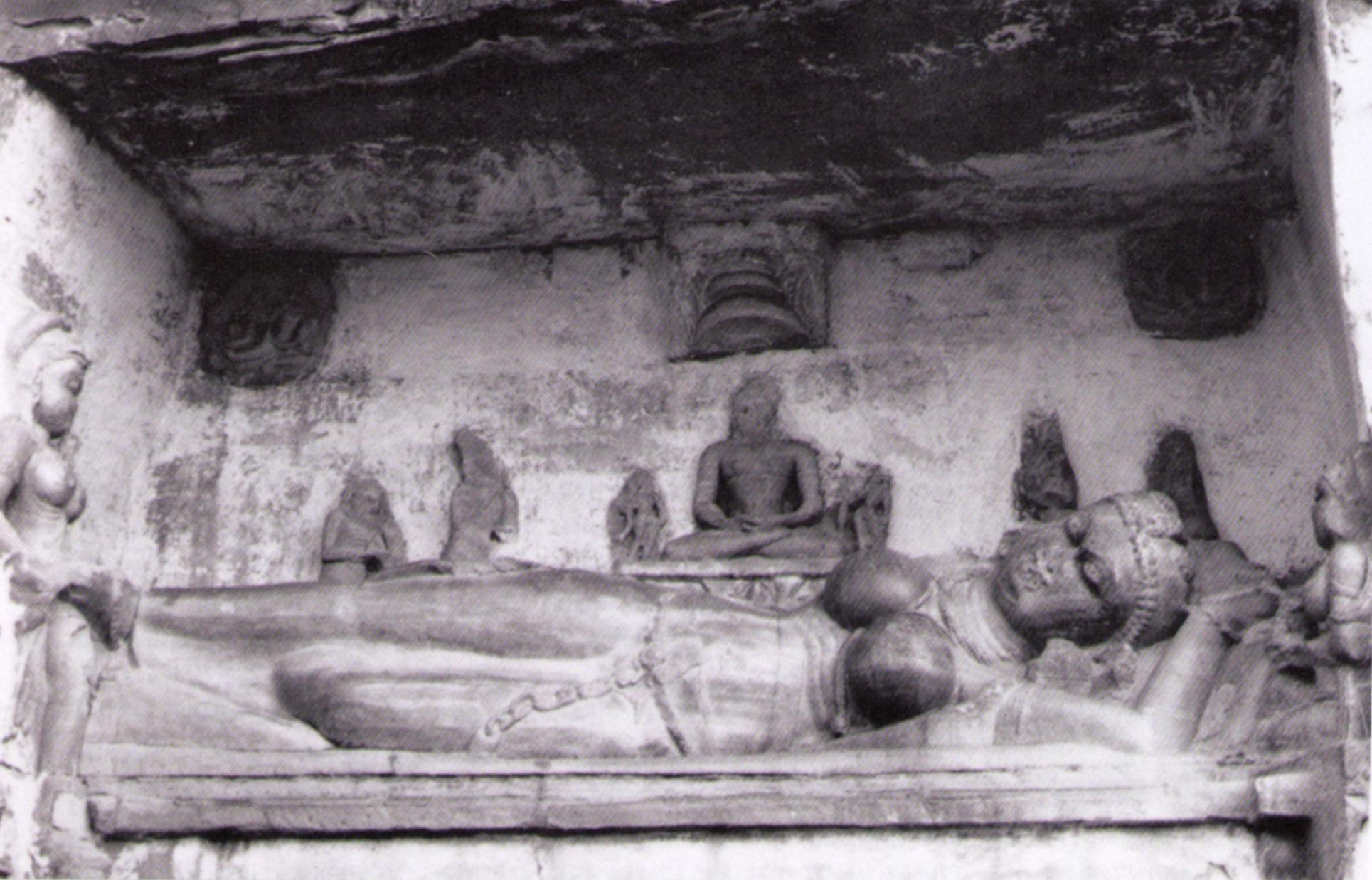
Fig. 3: The so-called 'mother of the Jina'. Gwalior Fort (Courtesy Günter Heil).
The subsidiary Jinas of the composition include a standing Parshva (fourth subsidiary Jina from left), and there is a similar standing Parshva at the 'entrance' to the rock-cut niche (right side only). Parshva images differ images from of the other twenty-three Jinas basically on account of the cobra motif. The hoods of a cobra form a “hood-circle” with seven or five hoods behind the head of the Jina, and the superimposed coils of the animal appear to the left and to the right of his body. The legend tells us that the Jina Parshva was once attacked by a hostile demon who hurled stones from above at the Jina. At that critical moment, a benevolent snake-god came to Parshva's rescue and spread his hoods as a protective shield over the meditating saint. This is the Jaina legend (concept and legend exist also in Buddhist art and literature), but actually Parshva is a form of the Jina, which reflects the influence of ancient Indian snake worship, a popular substratum whose influence is seen in Hindu, Buddhist, and Jaina iconography. A divine snake was mostly shown as a human being combined with a multi-headed snake, and the snake worshipper could thus recognize in the Jina Parshva the snake-god of his fathers and forefathers.
Out of the six Jinas we can identify only three, one Rishabha (second subsidiary Jina from left) and two Parshvas. Rishabha is recognized by his peculiar hair style, which again has a corollary in legend. Three Jinas, including the one in the centre, remain unidentified. The cognizances which enable us to identify all twenty-four Jinas are important in principle but only comparatively rarely shown in art. The Rishabha figure presents along with four minor Jinas a pentad within the pentad. In Jaina dogmatics, all twenty-four Jinas have the same religious rank, and differences in the scale as found on most multiple compositions are merely an artistic device. To the left and to the right of the central Jina we notice two panels with Jaina deities at the bottom level. The panel to the left shows an unnamed divine group (“tutelary couple”), and the panel to the right a goddess (Jaina Ambika). The motifs as such are very common in Jaina art (see Fig. 4). However, the way in which they are included into our composition is unconventional.
Fig. 3 shows a motif which shall be designated as 'resting queen'. The motif is well known from Hindu art, where the queen is always shown along with a child and is in some cases to be identified as Devaki-with-Krishna. In Jaina art, we find only very few specimens, and the child is shown nowhere. The motif has been identified by some as “mother of the Jina”. No doubt, the mother of the Jina is often shown in Jaina miniatures from Western India (1100-1500), but the paintings do not help us to identify the sculptural motif which thus remains unexplained. In our photo, the left leg of the queen is bent and the right leg is placed upon it. The female figure to the left, much smaller than the queen, seems to massage the right foot of the queen, but it is not clear what exactly she is doing.

Fig. 4: Kubera and Ambika as Jaina divinities; two miniature Jinas appear in the crowns of the trees, Gwalior Fort (Courtesy Günter Heil).
A second female attendant figure is shown behind the queen's head. In the back-wall of the niche we notice an unusual ensemble of motifs. A Jina image with lion-throne and fly-whisk bearers is flanked by two-plus-two figures, probably all worshippers and including at least one emaciated ascetic (extreme left). Further up we notice the remaining elements of the Jina image: garland-bearing couple... drum... triple parasol with Ashoka tree... drum... garland-bearing couple. There is a marked contrast between the main group, which forms a harmonious whole, and the disconnected figures in the rear.
Fig. 4 shows a niche with two Jaina deities, which adjoins the queen's niche to the right. We see Kubera to the left and Ambika to the right. Both deities are well known from Brahmanical iconography, Kubera being in Hinduism the Lord of Riches and Ambika being preceded by the mother-goddesses of Hinduism. Some motifs in the composition are identical with or related to motifs surrounding the Jina (tree etc.), others are peculiar to Kubera and Ambika respectively. We mention only the latter. Kubera carries a money-bag, now mutilated, in his left hand, while his right hand, which is gone, probably held a citron (up to the end of this paragraph, “left” and “right” are left and right as seen from the figure). An overturned jar, with coins pouring forth from its mouth, is shown below Kubera's left knee. The goddess Ambika keeps a child on her left knee, while a second, apparently elder child is standing to her right. The goddess is sitting on a lion (its head is seen below her right knee), and her feet are placed on a lotus which rests on the lion's back. Not all, but most of these elements belong to the standard iconography of the two deities. A banana plant separates the two figures and indicates that they are not directly connected, but are to be understood as attendant deities of the Jina who is in this case not a part of the composition. In the early period (up to 950), Kubera and Ambika are often shown in the lower register of the Jina images to the left and to the right. Besides, Ambika and (occasionally) Kubera appear in Jaina art also as independent deities. Strange to say, neither Kubera nor Ambika occupy very prominent places in Jaina literature.
Gods and goddesses of every description surface in most phases of Jainism, but they are outside the soteriological plane, that is outside Jainism proper. They cannot help man to reach salvation.
Impressions of the Jain Rock Sculptures at Gwalior Fort
(Photos by Sergio Conti)
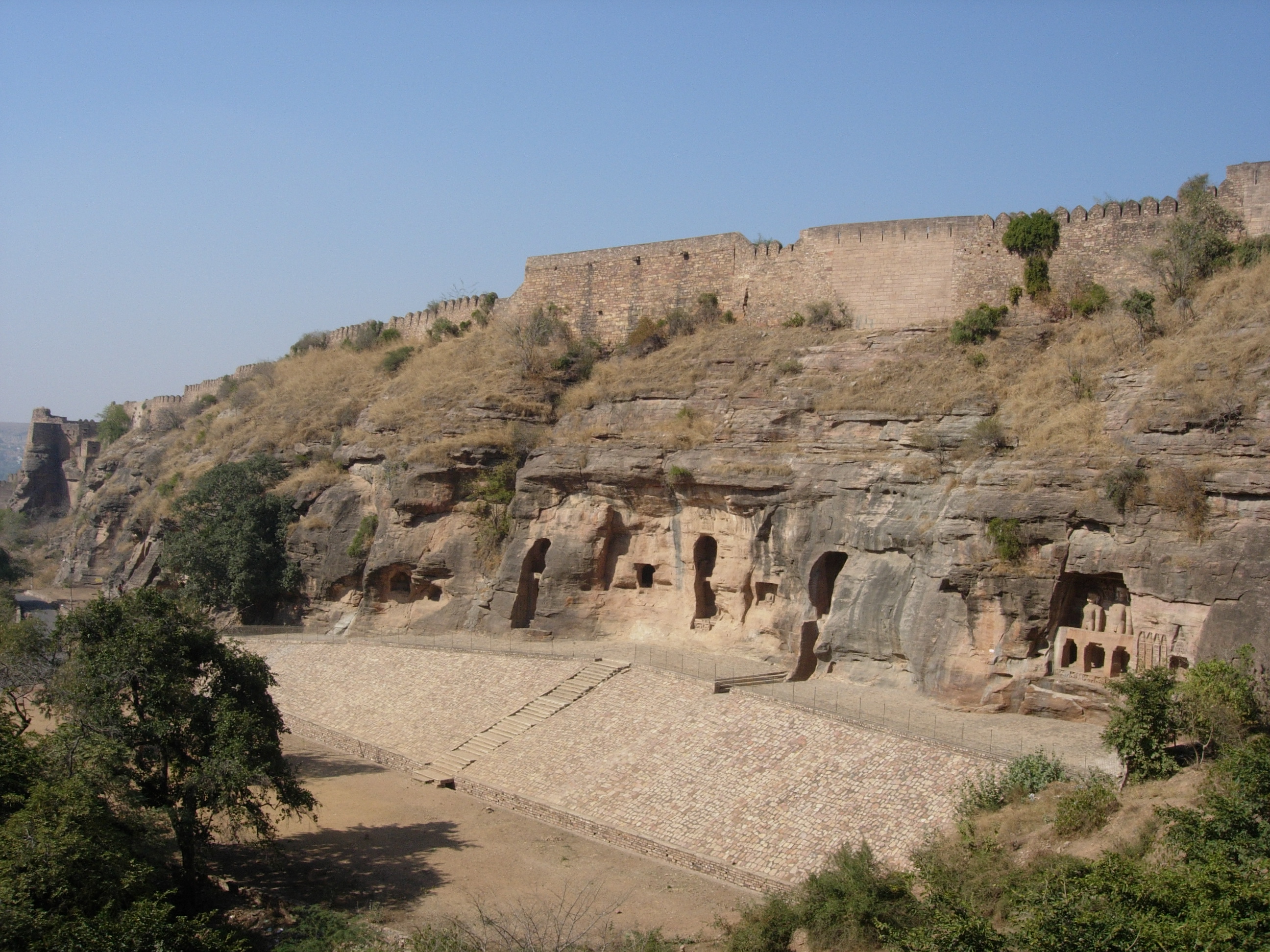

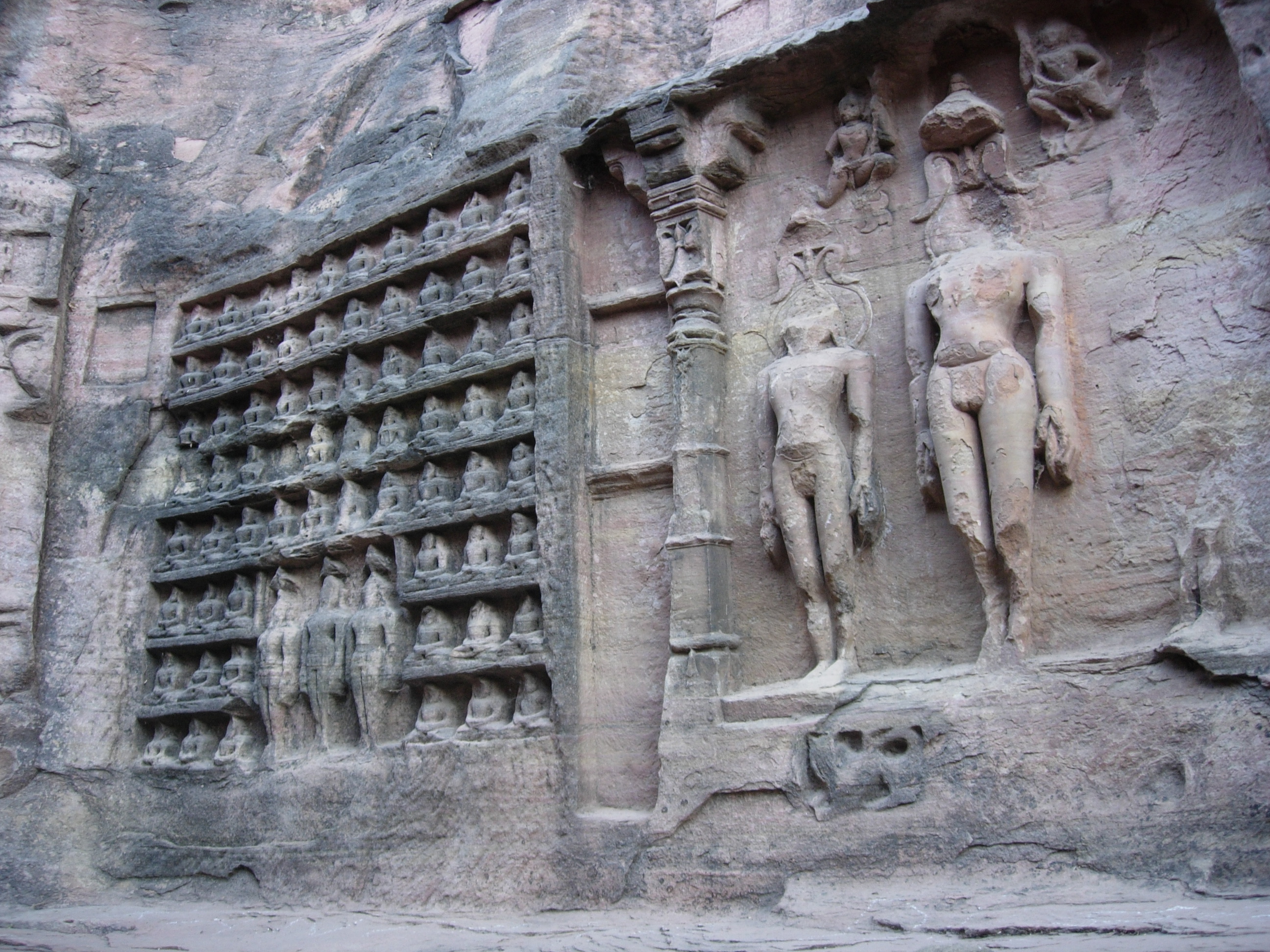
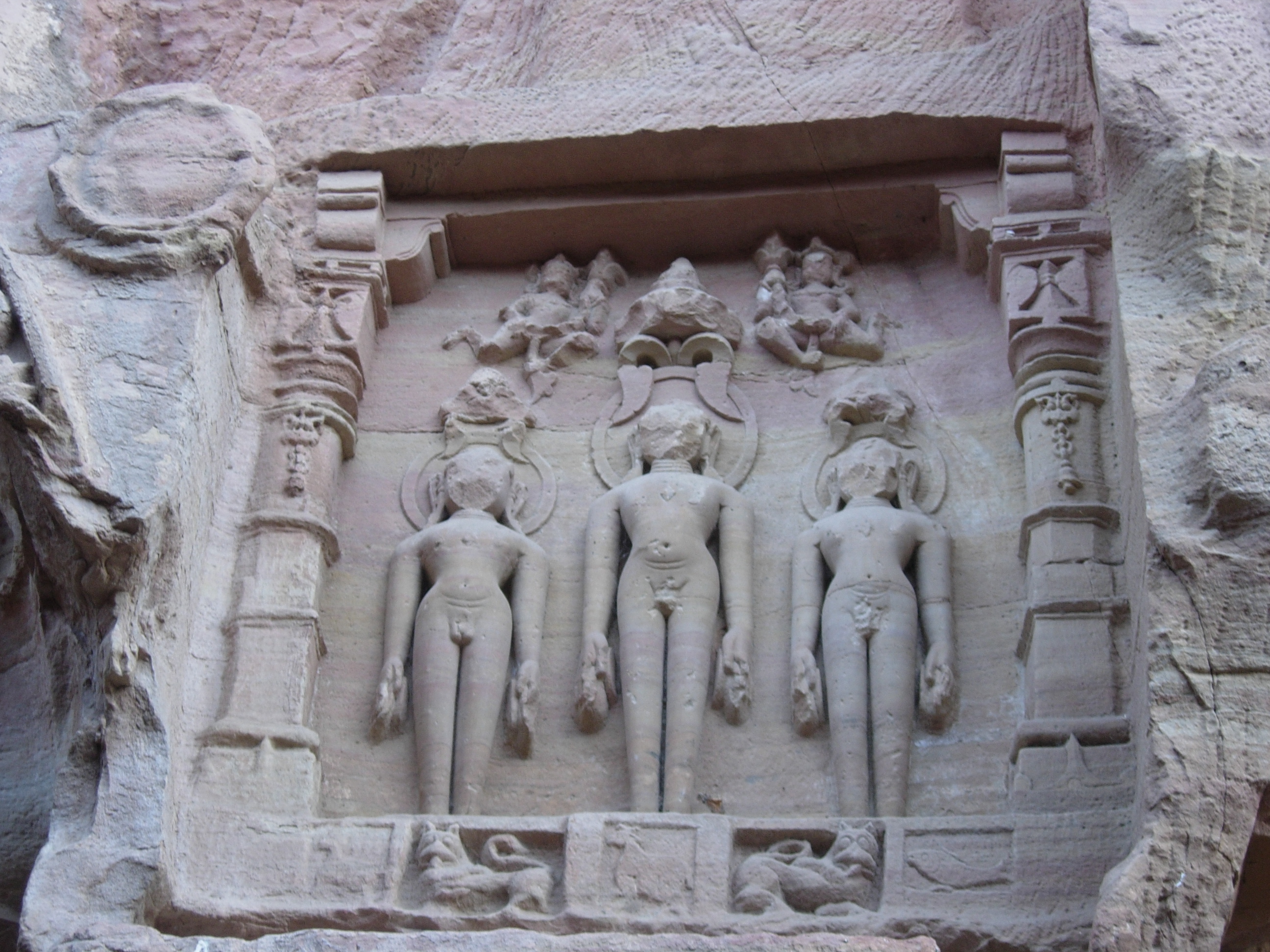
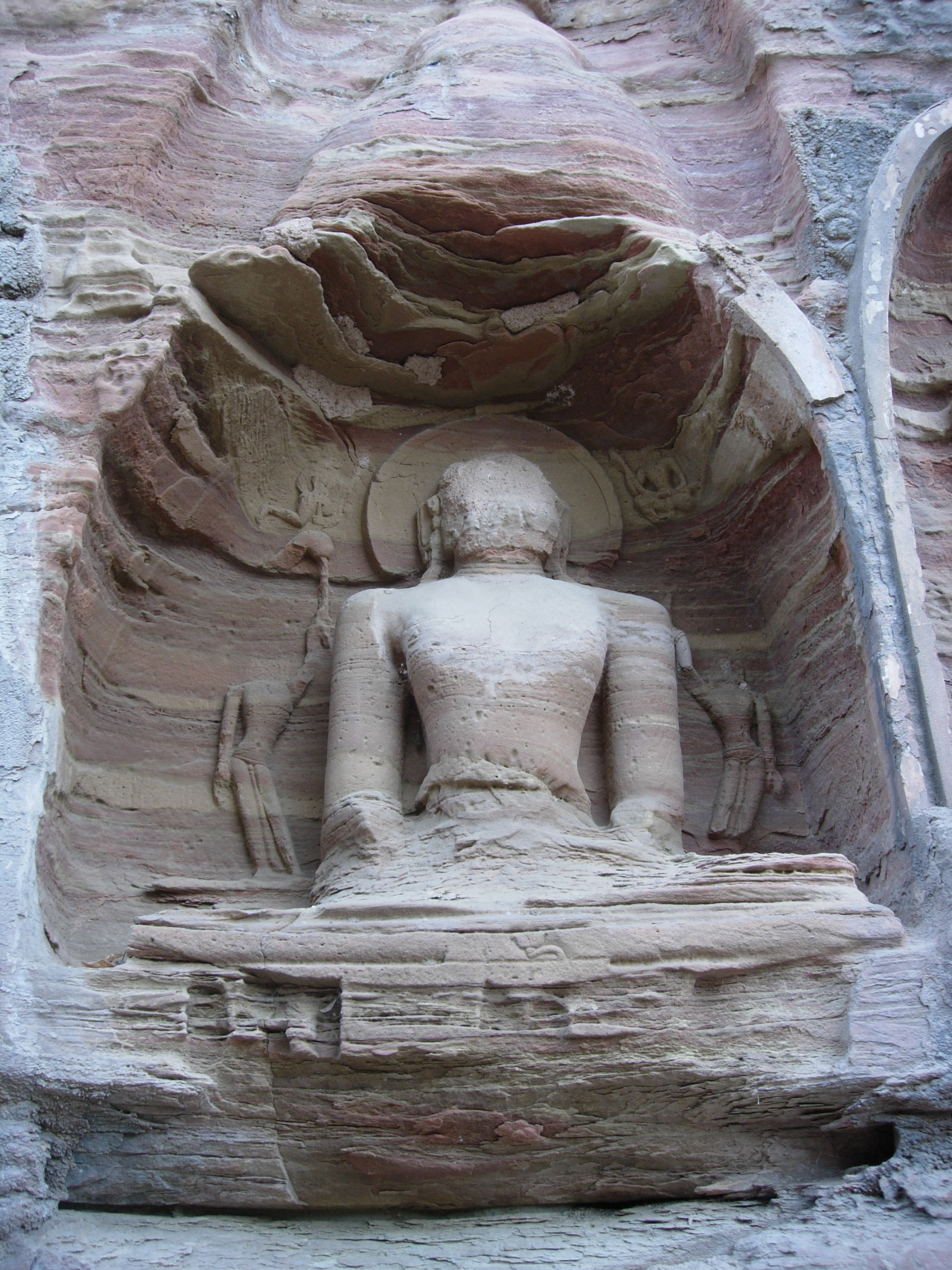
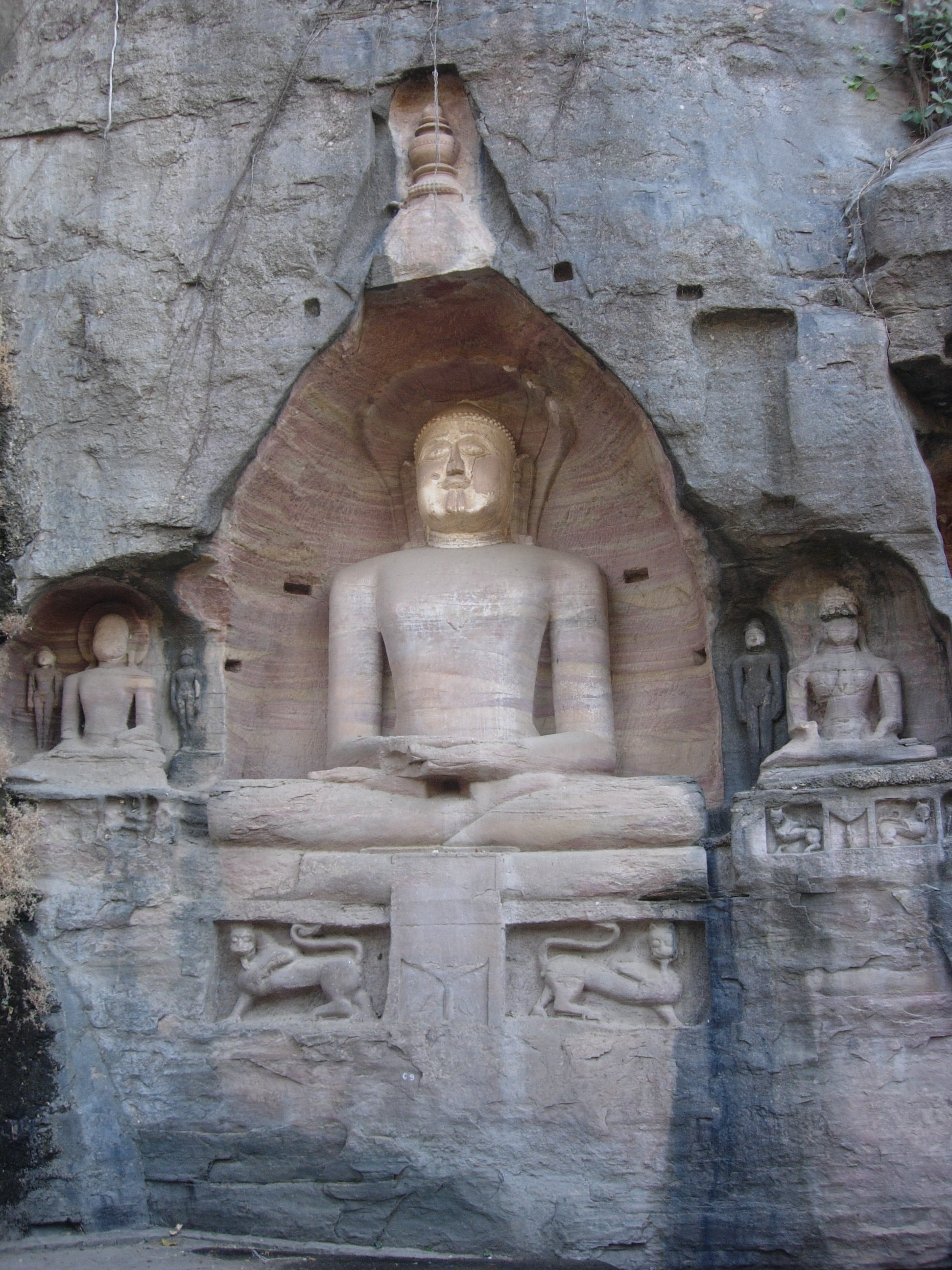
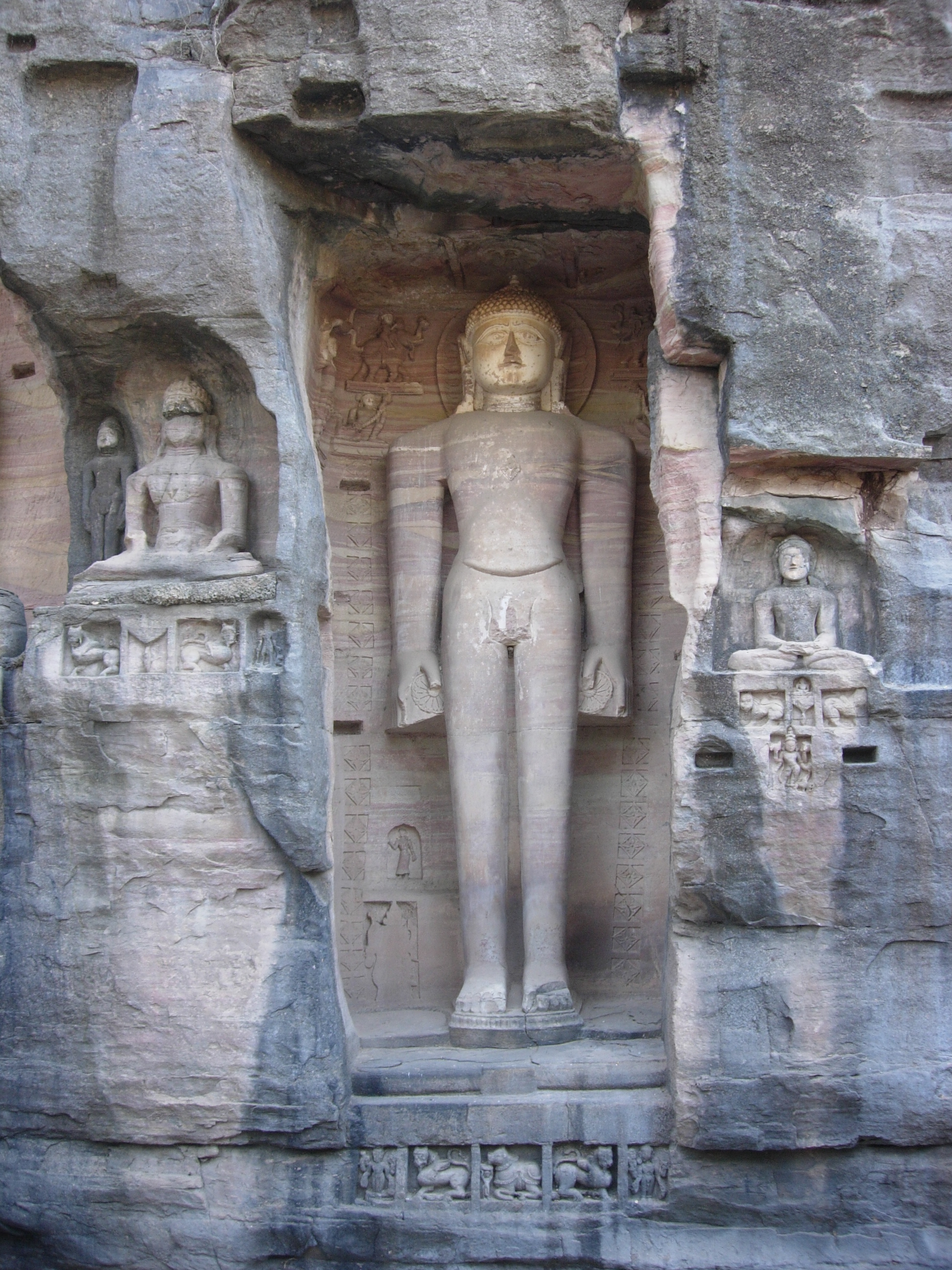

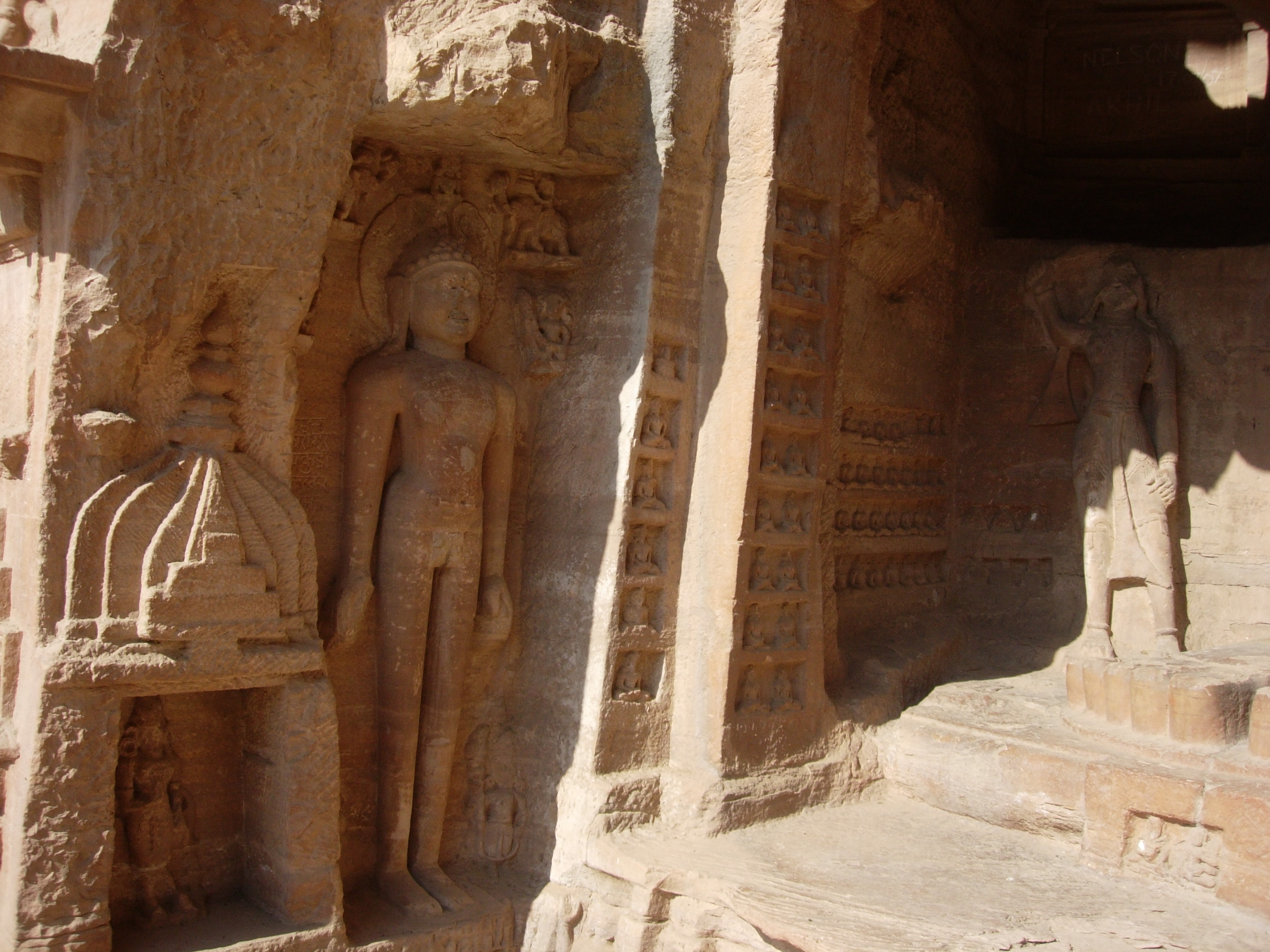

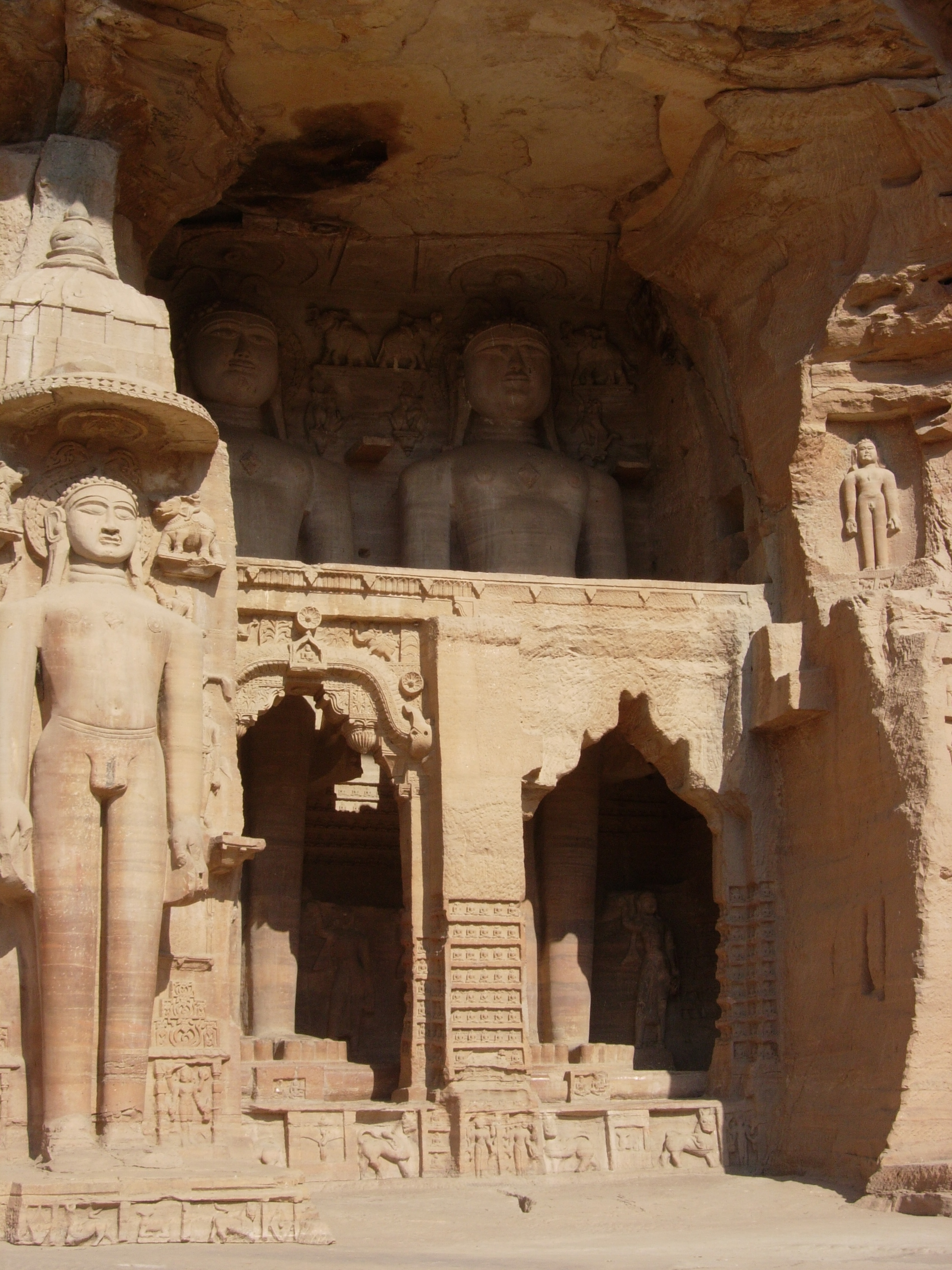
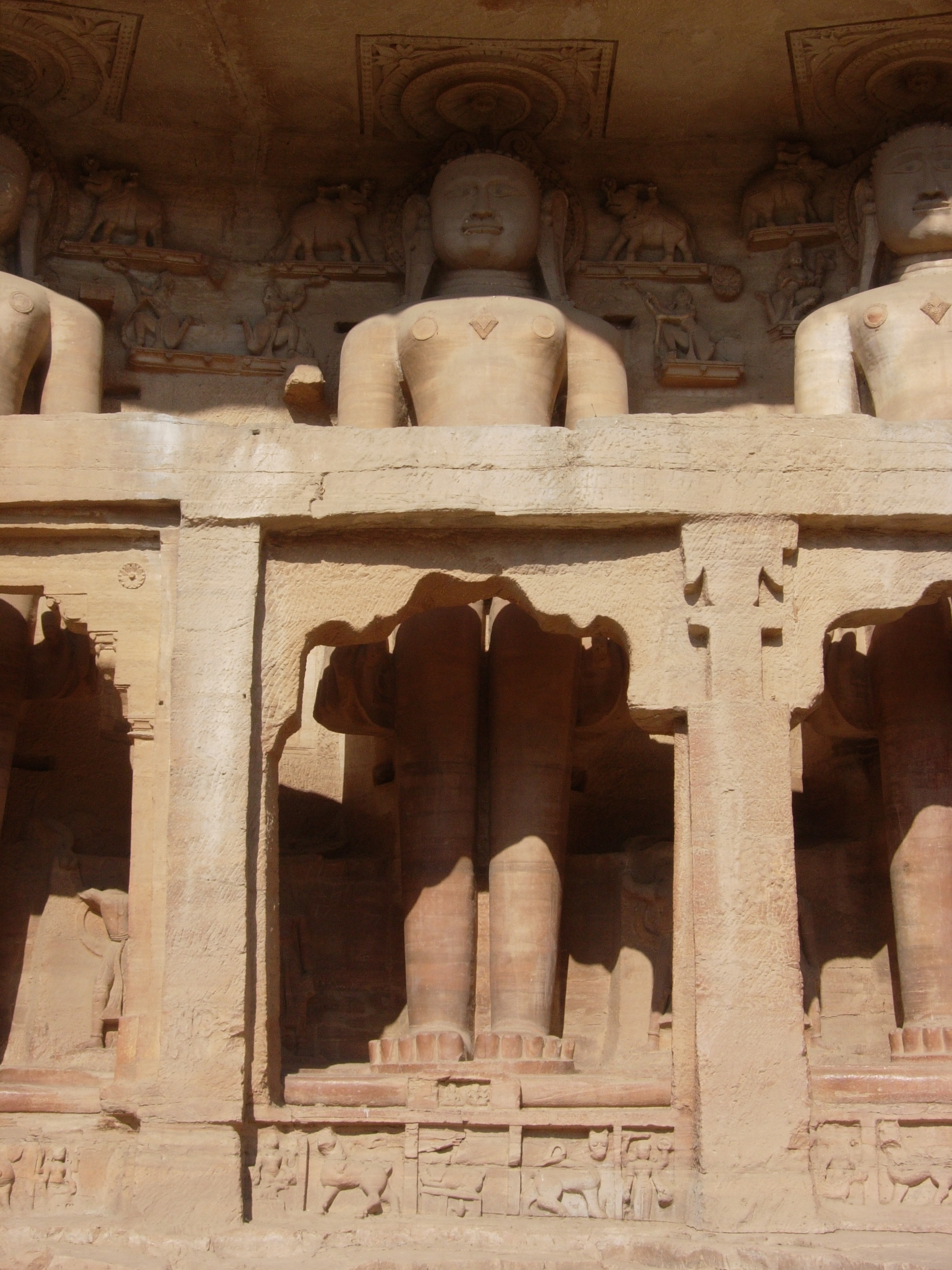
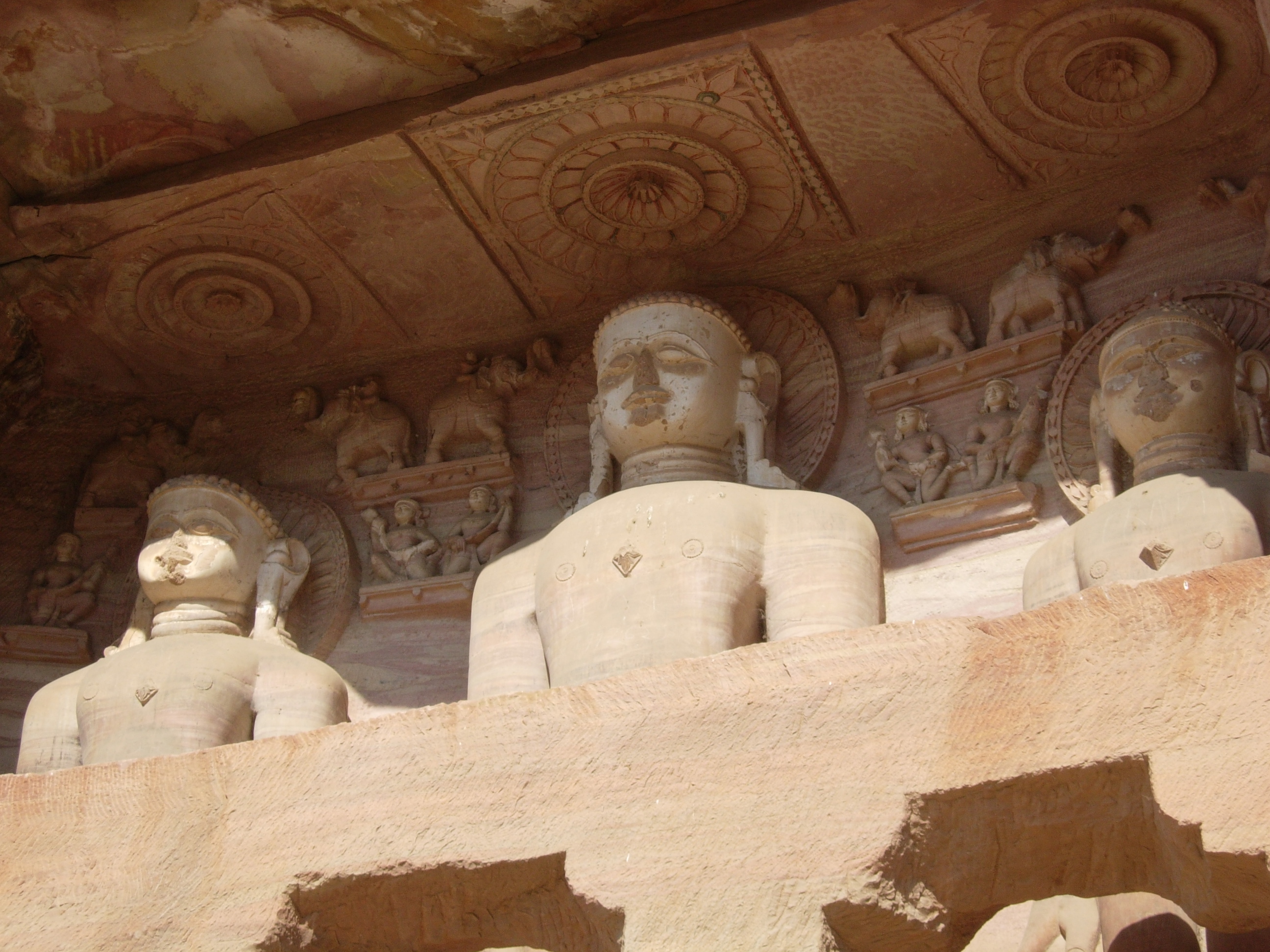
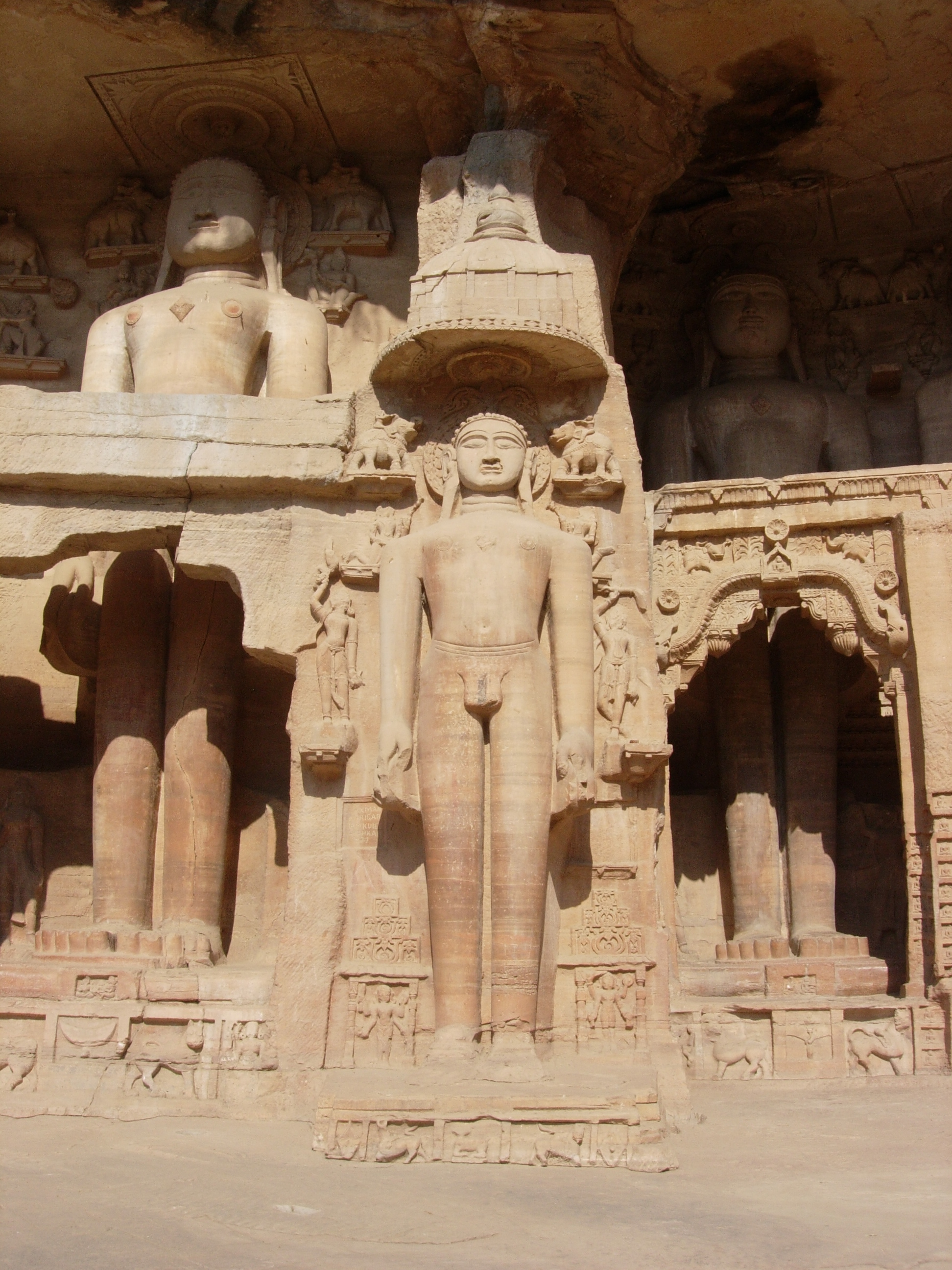
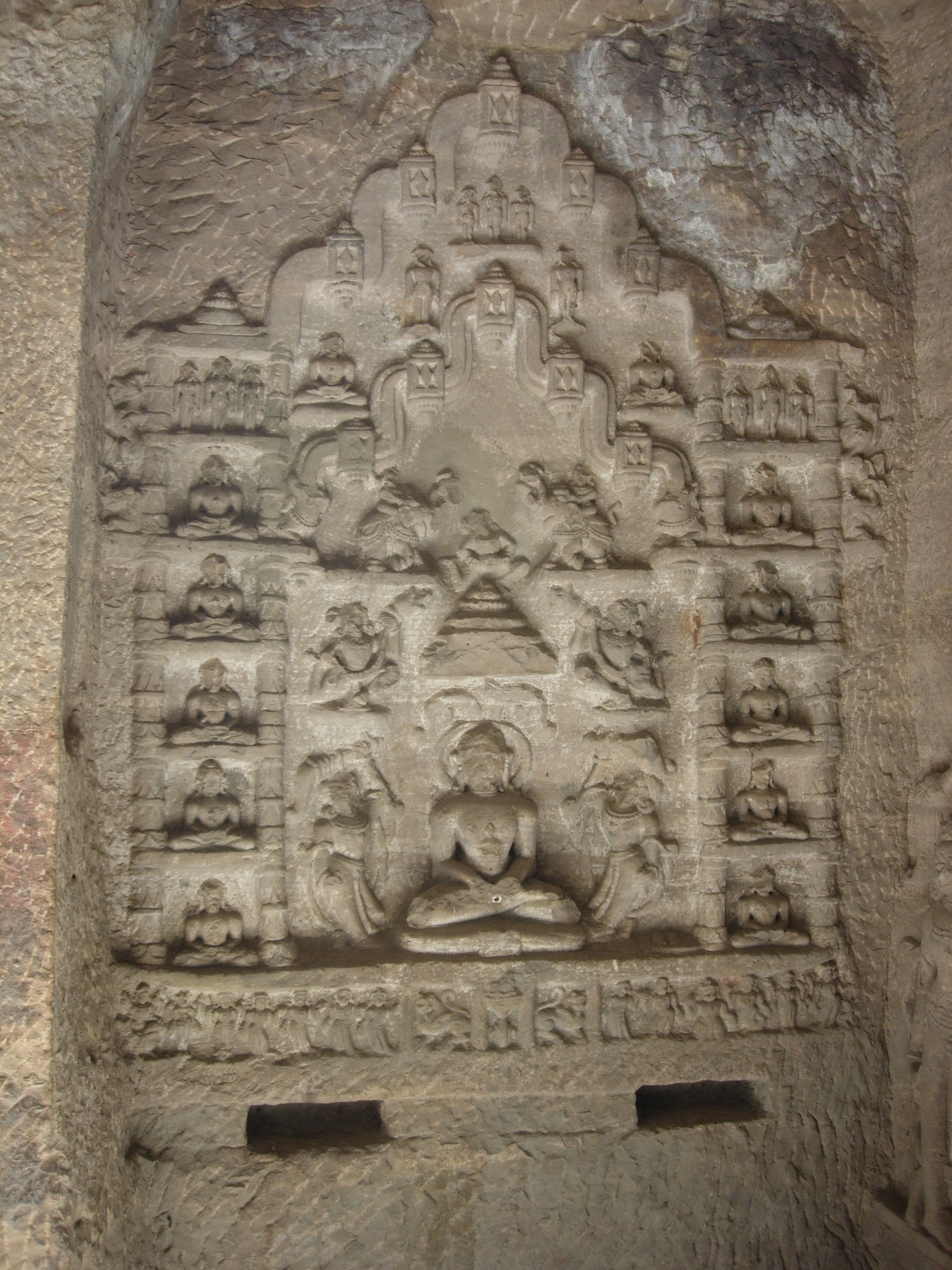
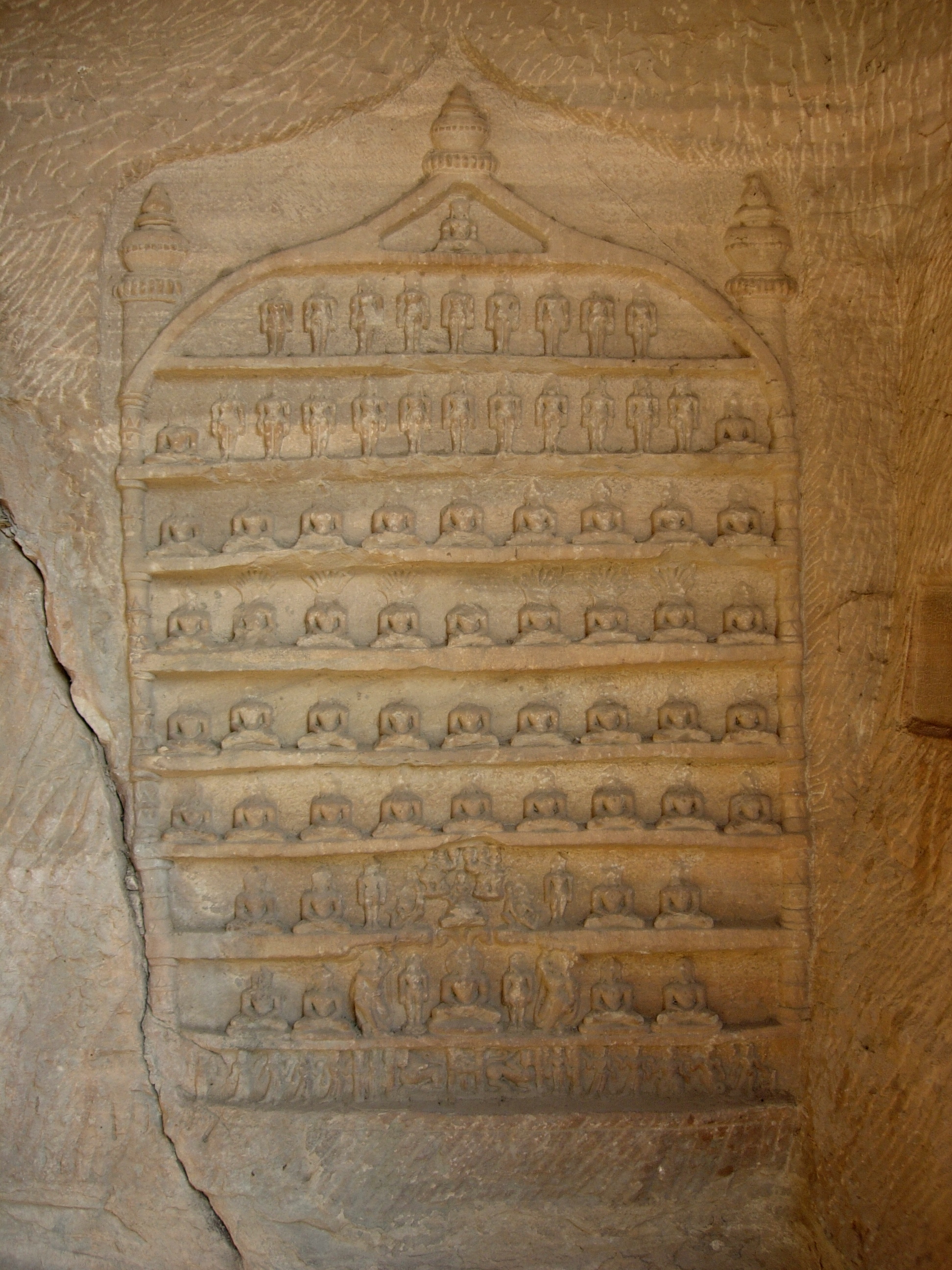
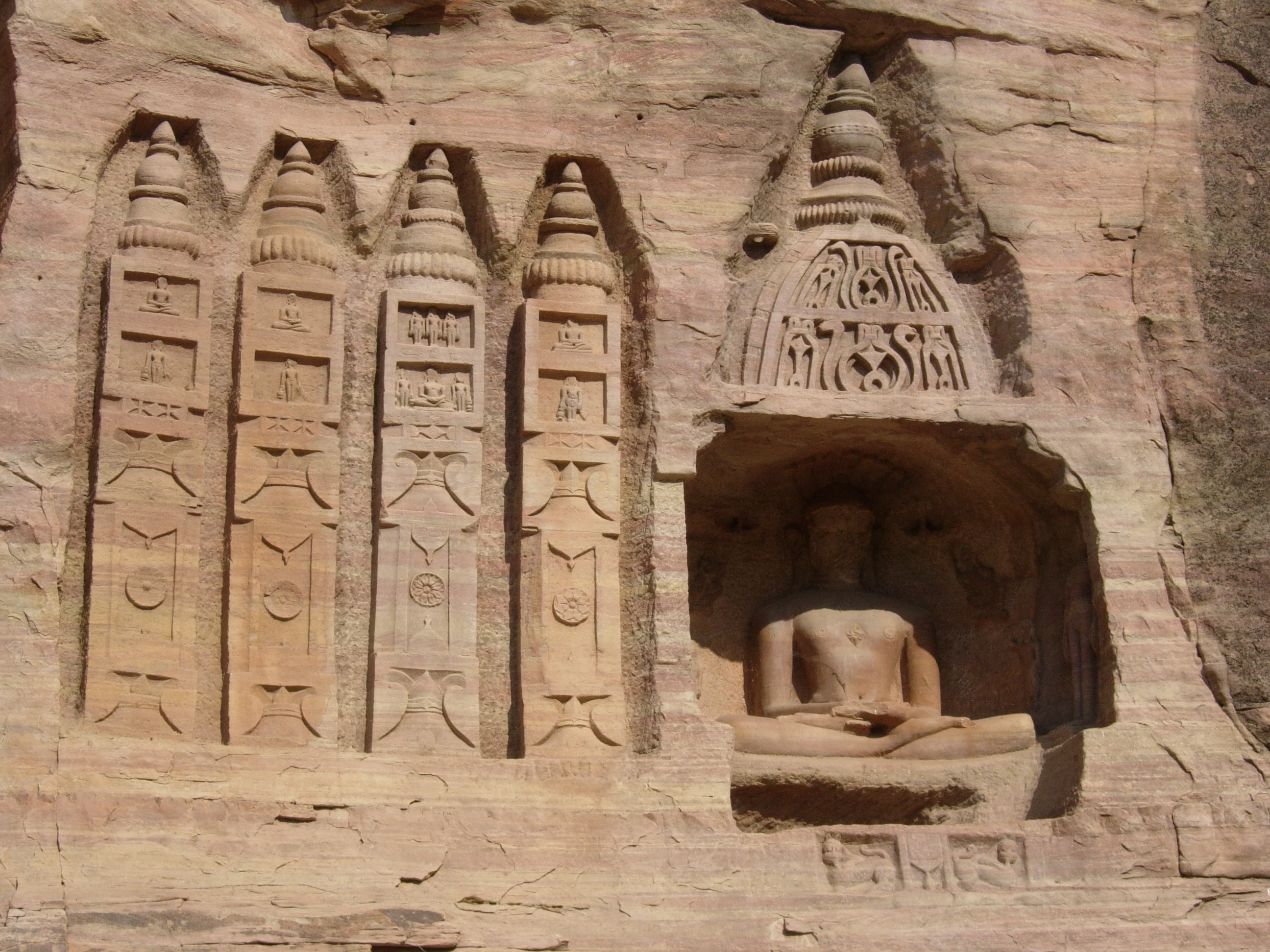

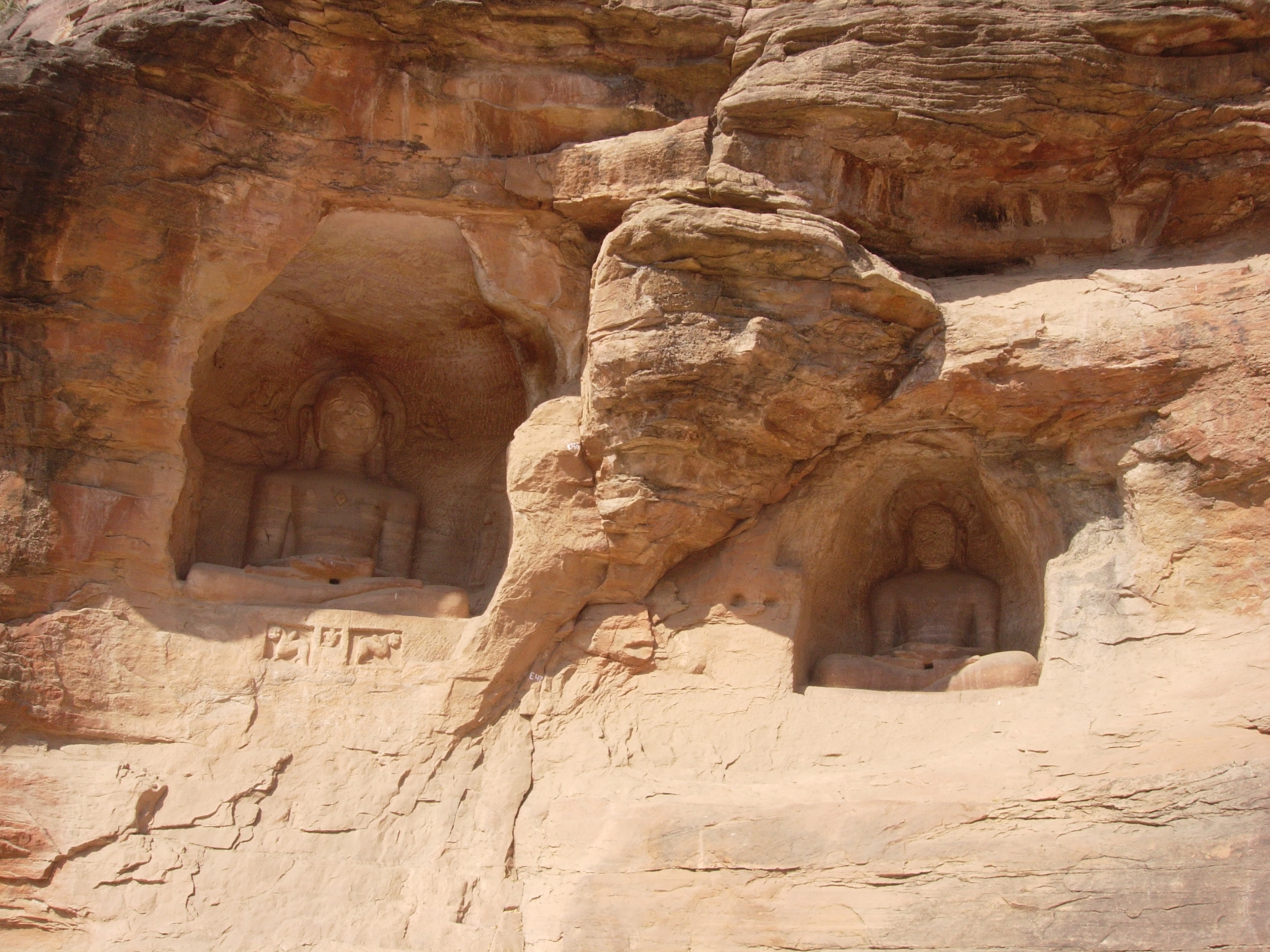

 Prof. Dr. Klaus Bruhn
Prof. Dr. Klaus Bruhn
